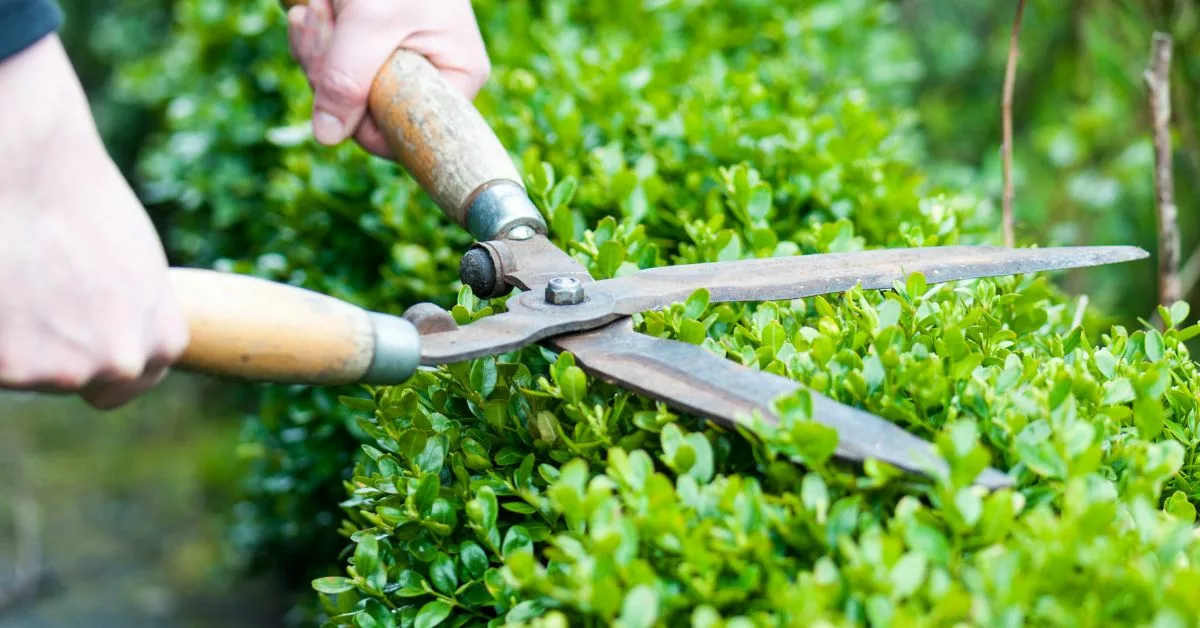Trimming and cutting your garden hedge is essential for maintaining a neat and attractive outdoor space. Here’s a comprehensive guide on everything you need to know about cutting garden hedges in the UK:
-
Timing:
- Trim hedges during the growing season, typically from late spring to early autumn. Avoid cutting during bird nesting season (March to August) to protect nesting birds.
-
Frequency:
- Regular trimming encourages dense and healthy growth. The frequency depends on the hedge type, but as a general rule, trim formal hedges 2-3 times per year and informal hedges once a year.
-
Tools:
- Invest in good-quality hedge trimmers, either electric, cordless, or petrol-powered, depending on the size of your hedge.
- Hand pruners or shears may be necessary for detailed work or shaping.
-
Safety Precautions:
- Wear appropriate safety gear, including gloves and safety glasses.
- Be cautious of power cables and check for the presence of wildlife or nests before starting.
-
Hedge Type:
- Different hedge types require different pruning approaches. Formal hedges, like box or yew, benefit from regular, precise trimming. Informal hedges, such as privet, respond well to a more naturalistic approach.
-
Hedge Height:
- Maintain the desired height by marking a guideline and consistently trimming along it.
- For tall hedges, consider using a ladder or long-reach hedge trimmers for safety and efficiency.
-
Shape and Taper:
- Aim for a slight taper, with the hedge broader at the base than the top. This ensures sunlight reaches the lower branches, promoting even growth.
-
Straight Cuts:
- Use a straight edge or taut string as a guide for straight cuts. This is crucial for achieving a professional and tidy appearance.
-
Curved Hedges:
- If you have a curved hedge, use a template or guide to help maintain a smooth, uniform curve.
-
Avoid Over-Pruning:
- While regular trimming is essential, avoid cutting into old wood excessively, as this can lead to bare patches and slow recovery.
-
Clean Up Debris:
- Collect and dispose of hedge clippings promptly to prevent them from smothering the hedge or spreading diseases.
-
Feeding and Watering:
- After pruning, consider feeding the hedge with a balanced fertiliser to encourage healthy regrowth.
- Ensure the hedge receives adequate water, especially during dry periods, to support recovery.
-
Disease and Pest Control:
- Keep an eye out for signs of pests or diseases. Early detection allows for prompt treatment.
-
Renovation Pruning:
- If a hedge has become overgrown or neglected, consider renovation pruning. This involves cutting it back severely to encourage fresh growth.
-
Professional Help:
- For large or difficult-to-manage hedges, consider hiring a professional hedge-cutting service.
By following these guidelines and adapting them to the specific characteristics of your hedge, you can maintain an attractive and healthy boundary for your garden. Regular attention to your hedge ensures it remains a vital and aesthetically pleasing part of your outdoor space.
